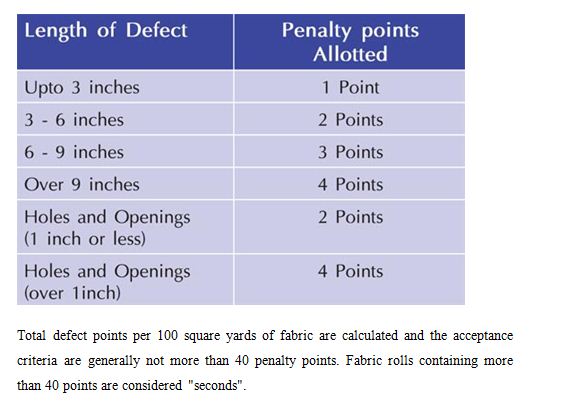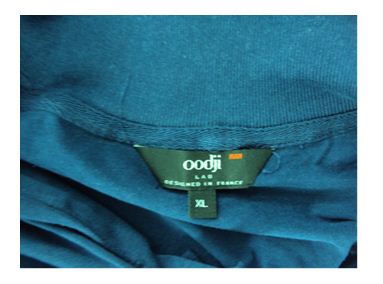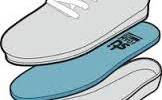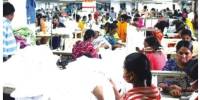Quality is defined as the level of acceptance of a good or service. It is a very essential requirement for any kind of product. Every product should maintain the standard quality level. In this 21st century of globalization market are becoming more and more complex, that’s why every industry are facing a high level of competition for their business. So the product must fulfill the customer requirement. For this reason every product should maintain the quality level. For the textile industry and apparel industry, product quality is calculated in terms of quality standard of fiber, yarn. Fabric construction , color fastness, design and the final finished garment. Nowadays buyers are very much quality conscious. If it is possible to maintain a high Quality system of inspection policy, the buyers shall be motivated and more quality products can be made.
The fitness for use concept can be applied to garment. For a garments to be fit for use provided its style acceptable.
- It must be free from defects such as stain, material defects, open seam, loose hanging thread, misaligned buttons and button holes, defective zipper etc.
- Must fit properly for the labeled size.
- It must perform satisfactorily in normal use, meaning that a garment must be abler to withstand normal laundering / dry cleaning / pressing cycle without color loss or shrinkage, seams must not come apart, fabric must not tear and so on.
But maintaining an adequate standard of quality also costs effort. From the first investigation to find out what the potential customer for a new product really wants, through the processes of design, specification, controlled manufacture.
Quality Control
Quality is of prime importance in any aspect of business. Customers demand and expect value for money. As producers of apparel there must be a constant endeavor to produce work of good quality.
“The systems required for programming and coordinating the efforts of the various groups in an organization to maintain the requisite quality”. As such Quality Control is seen as the agent of Quality Assurance or Total Quality Control.
Objectives
- To maximize the production of goods within the specified tolerances correctly the first time.
- To achieve a satisfactory design of the fabric or garment in relation to the level of choice in design, styles, colors, suitability of components and fitness of product for the market.
Satisfactory quality can only be ensured through:
- Knowing the customer need.
- Designing to meet them.
- Faultless construction.
- Certified performance and safety.
- clear instruction manual
- suitable packaging
Satisfaction quality can be ensured from the customer’s point of view by providing:
1. Right product.
2. Right quality.
3. Right time.
4. Undamaged condition.
To ensure the quality level of a garment we need to observe some specific sector
Fault free fabric.
Shade matching of the garments.
Making the pattern as per buyer requirement.
All the different parts of the garment should have the perfect size.
Good stitching, seam formation should be perfect.
Additional accessories such as button, zipper, tag, level is in right position.
Packing and packaging.
Quality section:
Quality control in garments production are operated in the different sector
1. Cutting section
2. Sewing Section.
3. Washing Section.
4. Finishing Section.
Quality control stuffing:
1.5.1- Cutting Department Quality Stuff:
1- Q.C general manager.
2-Q.C Manager
3-Q.C Officer
4- Q.C. In Charge
5- Quality Controller
6- Line Q.C.
Sewing Department Quality Stuff:
1- Q.C general manager.
2-Q.C Manager
3-Q.C Officer
4- Q.C. In Charge
5- Quality Controller
6- Line Q.C.
7- Process Q.C.
Finishing Department Quality Stuff:
- Q.C. In Charge
- Quality Controller
- Quality Supervisor
- Hrs Audit
- Pre Final Q.C.
- Measurement Q.C.
- Iron Q.C.
Fabric inspection:
Inspection in reference to the apparel industry can be defined as the visual examination or review of raw materials like fabric. The quality of a final garment depends on the quality of a fabric when it is received as a roll. Even the most outstanding manufacturing methods cannot compensate for defective materials. Normally, we inspect 10% of the rolls we receive and evaluate them based on a four-point system. This way, we can avoid fabric related quality problems before it is put into production. Normally four systems are used for inspection of finished garments.
1. 4 point system
2. 10 point system
3. Graniteville “78” system.
4. Dallas system.
But among them 4 point system is widely used. Now a short description of 4 point inspection system is given below. point system:
The 4-Point System, also called the American Apparel Manufacturers (AAMA) point-grading system for determining fabric quality, is widely used by producers of apparel fabrics and is endorsed by the AAMA as well as the ASQC.
The 4-Point System assigns 1, 2, 3 and 4 penalty points according to the size and significance of the defect. No more than 4 penalty points can be assigned for any single defect. Defect can be in either length or width direction, the system remains the same. Only major defects are considered. No penalty points are assigned to minor defects.
In this system, one should inspect at least 10 per cent of the total rolls in the shipment and make sure to select at least one roll of each color way.

Cause:
- High yarn tension.
- Less strength of yarn which breaks during loop formation.
- Presence of mineral particle in yarn.
- Incorrect gap between the Dial & Cylinder rings.
- Yarn feeder not properly set
Solution:
- For holes problems solution use proper count of yarn.
- Yarn strength is important.
- It should be free from all kind of foreign particle.
- The gap between the Cylinder & the Dial should be correctly adjusted as per the knitted loop size.
Cause:
- High yarn tension.
- Wrong cam setting.
- Breakage of hook or butt.
Solution:
- Defective needle should be chang2
- Needle setting should be right.
- Yarn tension has to minimize.
- Needle must be cleaned before production of any new fabric
Cause:
- If dying machine does not clean.
- Grease & Oil stains from the unguarded moving machine parts like; Gears Shafts Driving Pulleys & Trolley wheels etc.
- Fabric place on the dirty floor after completing the process.
- During transportation.
Solution:
- To remove the oil mark the machine should be cleaned regularly and lubricants use carefully.
- The fabric should place in the clean floor.
- Make sure that the fabric is neatly packed in or covered with Polythene sheets while transporting or in storage.
Causes:
1. Presence of dead fibers & other foreign materials, such as; dyed fibers, husk & synthetic fibers etc.
2. Dyed & other types of fibers flying from the adjacent Knitting machines cling to the yarn being used for knitting & get embedded in the Grey Fabric.
Solution:
1. Rigid control measures in the Blow Room to prevent the mixing of foreign matters in the Cotton mixing.
2. Segregate the Spinning & Knitting Machines, with Plastic Curtains or Mosquito Nets, to prevent the fibers flying from the neighboring machines, from getting embedded in the yarn / fabric.
Fly yarn: –
This fault occur when the flying yarn get mixed with the yarn during knitting.
Solution:
The knitting machine have to clean regularly because the machine when process the yarn to make fabric lot of fiber drop as wastage and this can be mixed with the fabric
Fabric Cutting:
Fabric cutting is the preliminary section in garments industry. The fabric cut into parts of garments here. This is most important section of garments for inspection because the fabric spread of 60 to 70 plies on the table for cutting. If there make any mistake for measurement in cutting it can cause a serious damage for many garments product. So it required skilled operator and high level of inspection.
Process Sequence of Fabric Cutting Section:
- Fabric spreading: 60 to 70 plies of fabric spread on the cutting table. The fabric spread is very important. All the fabric measurement is kept same for from one edge to another edge. Tension of all plies will be same. Marking process:
- Marking process: This is the second step of cutting section. The pattern parts place on the fabric plies and draws according to pattern measurement. Marking is done compactly for possible amount of fabric can save from wastage.
- Fabric Cutting: After making is done the cutting process begin. High speed cutting machine cut the fabric plies by the operator. The operator should be skilled for this process because the fabric has to cut by exact marking measurement.
- Numbering: When the fabric cut into parts has finished all the parts numbered by the sticker. This is done for all the parts of a garments can assembled by the same fabric. So it can minimize the risk of shade variation.
- Bundling: after numbering the parts has to bundled and sent to the sewing section Prepared bundling card according to fabric lay report this card maintain.
Quality Control in fabric spreading & cutting:
- Fabric spreading according to correct alignment with marker length and width
- Maintain requirements of spreading
- Lay contains correct number of fabric ply
- Correct Ply direction
Tension control The dimension of the pattern and the cut piece should be same and accurate Cut edge should be smooth and clean Avoid blade deflection Maintain cutting angle Fault occurs in cutting section and its remedies:
Misalignment of plies: Plies misaligned, resulting in garment parts getting cut with bits missing in some plies at the edge of the spread.
Cause:
- Different plies spread too tight or too loose.
- All the plies do not spread from the edge at same measurements.
Solution:
- All fabric should spread at same tension.
- Measurement should be equal at all measurement for the edge.
Less marker efficiency: less marker efficiency cause of increasing wastage and result a wrong cutting.
Solution:
Check the marker is placed on the spread with the edge parallel to the selvage of the goods. It must ensure that no plies is creased, damage, or have overlapped parts. It must be ensured that possible amount of wastage can reduce.
Incorrect tension of plies: Improper tension during spreading can spoil the right measurements of the cutting parts
Solution:
- Check the tension during spreading. It is very important for knit fabric.
Wrong cutting: This occur due to
1. Careless cutting operator
2. Deflection of blade.
3. Unsharpened blade.
4. Roller jams during cutting
Solution:
- Blade should be sharpened.
- Regular checking of cutting machine
- Should be careful when cutting.
Numbering mistake: The cutting parts numbered by the sticker to assemble the garments from same fabric. If operator misses any parts to number all the parts after from there will be wrong numbered.
Cause: Lack of concentration by the operator during numbering.
Solution: The operator has to be alert when he numbered the parts that no parts cannot be missed from numbering.
Sewing section:
After finishing the cutting process the cutting parts come here for sewing. It is mainly an assembly section in the garments factory. Different parts of the garments joined together here and attach other accessories like button, zipper make a complete product.
Quality Control in Sewing Section:
1. Input material checking
2. Accessories checking
3. Machine is in well condition
4. Thread count check
6. Needle size checking
7. Stitching fault should be checked
8. Garments measurement check
9. Seam fault check
10. Size mistake check
12. Shade variation within the cloth
13. Wrong placement of interlining
14. Creased or wrinkle appearance control
Defects occur in sewing section and remedies:
Skipped stitch: Some place in the stitch line where the stitch does not formed
Cause:
- Failure of needle to enter loop at correct time
- Needle deflection or bent needle
- Thread loop failure due to incorrect needle size for thread size
- Incorrect sewing tension in the needle
- Thread loop failure due to incorrect setting of thread control mechanism
- Flagging of fabric due to poor presser foot control
Solution:
- The sewing tension in the needle should be proper.
- Perfect needle size for thread size
Needle breakage defect: Scratch on the sewing product by the needle tip when several stitches are performed and needle is broken during sewing
Cause:
- Excessive tension in needle thread
- Excessive needle heat, groove or eye blocked with melted fabric
- Thread fraying at needle
- Thread trapped at thread guide
- Thread trapping at the base of cone
Solution: The needle has to change immediately. If the scratch on the garments is very big or deep the product should be rejected.
- Use stronger thread or adjust tension.
- Reduce Increase thread guides and reduce disc tension
- The overhead guide should be directly above cone or the thread package. Also ensure that thread package shouldn’t get tilted during off winding.
Uneven (sleeve, armhole): sleeve or armhole edge fold has a measurement. Uneven means when the measurement is not same in all place. This occur due to careless operating by sewing operator
Solution: the uneven place seam has to open and again stitch with right measurement.
Main level not in centre point:
Buyer gives instruction where to place the main level. If it is placing in the wrong area this is a fault.
 Solution:
Solution:
- Main level has to attach in the right place.
Oil mark in garments:
Oil mark occur from the sewing machine lubricants and spot is appeared on the garments
Cause: During the sewing operation oil can accidentally slick out from the machine and drop on the fabric and spotted.
Solution: Spot lifter chemical use to remove the oil the mark of the garments. At first the spot lifting chemical spray on the garments spot then air blown by the machine. The spot remove.
Side seam not in line: Side seam are not at the side line. It may come forward or backward.
Solution: Cutting parts must have right measurement and oprator have to be conscious about that. Some times it can recover by stitching again or it can be reject.
Seam Pucker:
After sewing when the fabric is puckered in the seam area. It is the wrinkle, or corrugation of the sewn fabric running across the seam
 Cause:
Cause:
Fabric and / or thread instability
Poorly controlled fabric feed
Extension in sewing thread
Incorrect tension setting
Structural jamming or inherent pucker
Solution: Adjust feed timing and fabric control for maximum pulling of the fabric.
Check tension level in the thread, Sew with minimum tension possible. Always adjust bobbin thread tension first then needle thread tension. Check if the coefficient of friction of the thread with metal is high.
Shade problem: It is the problem appeared when the two parts shade looks different in the garments
 Causes: It is also may be a problem in cutting section where this parts made numbering mistake.
Causes: It is also may be a problem in cutting section where this parts made numbering mistake.
For the lack of experience or concentration of worker and if different parts are mixed by worker.
Solution: Shade problem parts are separate and actual parts are attached
Kacha problem: If unexpected parts are shown by the garments from sewing area then this problem is occurred
Cause: This fault is occurred by operator.
Solution:The stitch has to open and again sewing.
Non matching thread: Some times when sewing is done, the garments and the sewing thread looked shade variation.
Cause:
If garments color and sewing thread does not match with color
Solution: The sewing thread must have the same color with the garments. To ensure that before sewing the thread must check with the garments.
Washing section:
Washing process of garment is done to create wash look appearance. After washing the garments create a new looks which seems the new touch of fashion.
Washing technique create new fashion such as tagging, grinding, destroy, Blasting, whiskering, permanent wrinkle, deep dye, tie dye, p.p spray, hand crapping, p.p spoon zing etc. Which is also seems the best touch of garments.
The main and important function of washing is to reduce size materials as a result the garment become size free and become soft hand feel.
When these soft garments are touched then it seems to best touch of garments.
To attraction the customers/Buyer by different types of Fashionable washing and market developments.
Due to washing, shrinkage occurs in the garments. There is no possibility of further shrinkage of wash garments.
Any dirt, spot or germ if added in the garments during manufacturing is also removed due to washing
Quality control in washing section:
- Shade variation check.
- Uneven check.
- Maintain time schedule for each process.
- Maintain exact temperature for each process.
Fault occur in washing and remedies:
Shade variation:
Shade variation is a common problem in washing process. One garments shade might be deep and another is light.
Cause:
- Selection of wrong recipe
- Lot variation
Solution: If shade is deep then the garments again rewash and if it is light then re-dye the garments.
Wash hole: Before washing if the garments have any hole, it can be increased during washing process.
Solution:When any hole in the garments appeared, it does not process to washing.
Fabric may damage by excessive whickering: If fabric damage by whickering, to minimize it denim pen is used.
Solution: Mark on the garments where effect to create by the denim pen.
Destroying of the fabric: if destroying process done before washing it can damage the fabric.
Solution: So after washing and before P.P spray destroying is done, and then washes for a short time. So the garments get the desired effect.
Enzyme wash: Excessive enzyme use or excess time can change the shade.
Solution: So appropriate amount of enzyme should use to maintain the reaction time.
Uneven problem: Any uneven problem occurs in the garments.
Solution: Denim pen or diamond pencil use to match with the desired shade.
Finishing section: This is the final section of the garments industry. Various types of fault check here. This is the important section where finally the product has to inspect and solve the defect of the garments.
Quality Control in Finishing Section:
1. Proper inspection of the garments including measurement, spot, dirt, impurities
2. Shading variation check
3. Smooth and unfold in pocket
4. In secured or broken chain or button
5. Wrong fold
6. Proper shape in garment
7. Properly dried in after pressing
8. Collar closing
Fault occur in finishing section and its remedies:
Ironing problem: Some ironing problem occurred are giving bellow most
Shoulder up down: During ironing if the shoulder side is not placed correctly
Causes: It is also the mistake of the worker.
Remedies: Shoulder placed correctly and ironing again.
Bottom up down: If top and bottom are not placed correctly
Causes: For the lack of experience or concentration of worker.
Remedies: Bottom and top placed correctly and ironing again.
Puckering: Crease if brought in the fabric and ironing.
Causes: For the lack of concentration of worker if he ironing the garment on the crease area.
Remedies: Remove the crease from the fabric and ironing again.
Poor folding resulting poor appearance: Due to poor folding the garments Appearance looks odd or not appreciating.
Solution:
The garments should fold properly according to buyers instruction.
Incorrect packing: The packing should do by following instruction from the buyer.
Solution:
The product has to pack properly
Size mistake: Different size sign are used in garment and lock pin label
Causes: It’s a mistake or lack of concentration of worker.
Solution:
Place the lock pin which size are shown in the product
Barcode problem: If the main label and hang tag barcode are not similar.
Causes: It’s a mistake of worker.
Solution: Same barcode of main label and hang tag are placed.
CONCLUSION:
Quality control plays a vital role in knit garments production. Nowadays buyer requires specific quality in all major parts of the finished products. What special in this report is that the information data and description very much objective & practical. We have tried to complete this project work as much we can. It will help us to maintain the quality of the garments in garments production.
















